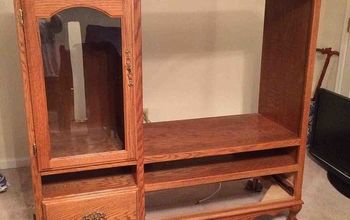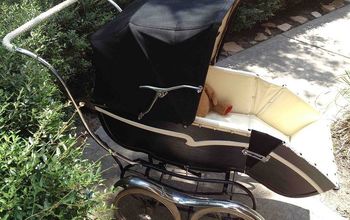How to Remove Rust From Metal and Prevent It From Forming Again

By Hannah Twietmeyer
We’ll be the first to admit that rusted metal is not a good look when it’s not intended. Tarnish, which we discuss below, is tasteful to a certain crowd, but rust that occurs naturally is an obvious sign of wear and tear. Though the dusty red layer that coats tools, hinges, and bits of your car is a very common product of age and exposure to the elements, it can eat away at metal fast if it gets out of hand.
Learning how to remove rust from metal—and preventing it from forming in the first place—is vital to keeping your knick-knacks in working shape. Plus, you can even do it with items we guarantee are hiding somewhere in your home. This guide to removing rust from metal will teach you the ins and outs of rust, how to make it go away, and tips for preventing rust from taking over.
Photo via Stephanie Abbott
What Exactly is Rust?
To understand how and why rust occurs, we need to go back to the basic principles of matter and composition that we learned in elementary school science. This includes quite a bit of chemistry jargon, but we’ll break it all down for you.
Rust forms when certain metals are exposed to moisture—even just the moisture in the air we breathe. Hydrogen and oxygen, a.k.a. atoms of water, both begin to break apart into their respective components. The free oxygen fuses with iron in metal to form iron oxide, a corrosive chemical compound (via How Stuff Works). Thus, a chemical reaction occurs called iron oxidization, resulting in a layer of reddish-brown rust.
Do All Types of Metals Rust?
Actually, no. Although most metals can and do corrode, iron (or metals that contain iron) and steel are the only metals that rust ( Britannica).
Most metals corrode, but some are more resistant than others. Corrosion is the general term for the breakdown of metals through a chemical process, usually instigated by exposure to water, oils, acids, bases, salts, gaseous materials, and other types of chemicals (via Heavy Industries). So, rust is a specific type of corrosion.
According to Corrosionpedia, noble metals like gold and platinum have a more stable chemical makeup compared to base metals, and therefore resist chemical changes when exposed to external factors—even heat. Other metals, like copper, more readily corrode, and it's highly visible. You’ve probably seen copper or bronze coated in a green layer—that’s corrosion at work!
The Difference Between Rust and Tarnish
Tarnish is yet another form of corrosion, but it’s not quite the same as rust. Remember, rust is caused specifically by iron oxidation. Metals that lack iron in their makeup also go through an oxidation process and won’t rust red and will tarnish instead—a process that leaves shiny metal darkened, discolored, and dulled.
When you hear the word “tarnish,” the first thing you think of could be silver—heirloom decor, holiday flatware, and jewelry. If you don’t like the antique look this reaction leaves on your silver, don’t worry—there are ways to remove tarnish to bring the sparkle back to your pieces.
Brass, too, can lose its shine to tarnish over time. Keep your home decor lustrous and polished by cleaning brass items every now and then.
Photo via Bella Tucker Decorative Finishes
What Is Patina?
Patina is another term you might hear tossed around with rust, tarnish, and corrosion, and it’s yet another result of a chemical reaction. Like rust, it is another form of corrosion, and often a very visible one. However, it’s not red—it’s green. And while rust occurs on iron products, patina can be found on copper, bronze, and other similar metals.
Consider the Statue of Liberty. We know her today as the 305-foot-tall, green symbol of freedom standing tall over New York Harbor (via History). The original Statue of Liberty actually had distinctive copper skin, but in the many years since her assembly, exposure to harsh conditions and oxidation caused a green film to cover the outer layer of copper. This layer is a protective patina—it keeps the metal underneath from weathering damage (per The Electrochemical Society).
Photo via ChickFix
How to Remove Rust from Metal
Although a coating of rust itself isn’t inherently dangerous (it’s a specific bacteria that causes tetanus, not just the presence of rust on a nail), it isn’t exactly pretty to look at. Rust that has been eating away at your iron or steel products for a long period of time might be beyond help—you’ll be able to tell if there are holes in the metal. Those products will likely need replacing. Luckily, there are still ways to remove moderate amounts of rust from household items, and we’ve gathered a handful of methods for you to try for yourself.
Note: Many rust removal techniques are not suitable for painted metal. In the last section of this guide, we’ll teach you how to prevent rust from forming in the first place on these pieces.
How to Remove Rust from Metal with Baking Soda
Baking soda is used often in baking, but it also has powerful cleaning and deodorizing properties. We’ve used it to clean hair dye stains from sinks and polish glass shower doors, but it also can help rid your home products of rust.
Tools and Materials Needed:
- Cup or small bowl
- Baking soda
- Water
- Gloves
- Coarse scrubbing object (steel wool or a wire brush)
- Clean cloth
Step 1: Create a Paste
In a cup or small bowl, add several tablespoons of baking soda. Then, pour in some water, about half the amount that you measured for the baking soda. Mix to form a thick paste. If the paste is too thick, you can always add water in small amounts to thin it. Similarly, add baking soda if the mixture is too thin.
Step 2: Apply to Rusted Item
Whether it's a set of keys, metal hardware, or any other items that you’re trying to rid of rust, completely cover the affected area with the baking soda paste. Let the coated items sit in the mixture for 5-10 minutes.
Step 3: Scrub
Using a piece of steel wool or a hard wire brush, scrub the baking soda paste off of the rusted area. Wipe clean with a cloth, and you’re done! If traces of red still remain, repeat the soaking and scrubbing process as needed.
How to Remove Rust from Metal with White Vinegar
Similar to baking soda, white vinegar has made a name for itself in the cleaning product lineup. From dishwasher cleaning hacks to sparkling drinkware, there are so many ways to use white vinegar as a cleaner in your home, even when it comes to removing relentless rust.
Tools and Materials Needed:
- White vinegar
- Cloth (optional)
- Coarse scrubbing object (optional)
- Gloves
Step 1: Apply Vinegar to Rusted Metal
How you apply the white vinegar to your product depends on what the product you’re cleaning is. If you’re looking to clean a few nuts and bolts, you can go ahead and drop them in a cup full of white vinegar. If you’re trying to free hardware that has rusted together, simply pour the vinegar over the area or apply it to the dirty surface using a cloth.
Step 2: Rinse the Items
After you’ve let the vinegar sit soak on the items for several minutes, you can choose to scrub them with a coarse product (like steel wool) to remove stubborn rust flakes. Whether you scrub or not, make sure to thoroughly rinse and dry the metal after the rust is removed—lingering vinegar can damage the item over time.
How to Remove Rust from Metal with a Potato
You heard us right—if you have a potato lying unused in your kitchen, you can put it to work on removing rust. Potatoes actually contain an acidic compound that is especially effective in cleaning through rust. According to the Farmers’ Almanac, this method in particular works well with kitchenware, like rusted knives, pots, and pans.
Tools and Materials Needed:
- Potato
- Knife
- Liquid dish soap
- Bowl
- Coarse scrubbing object (optional)
- Clean cloth or towel
Step 1: Cut the Potato
To properly use the acids found in a potato, you’ll need to release them. Take a sharp knife and carefully cut a potato in half. Whether you do so vertically or horizontally, it doesn’t matter—just make sure you have a good amount of surface area on the sliced side.
Step 2: Soak in Dish Soap
A potato might be able to get the job done on its own, but combining it with some liquid dish soap will give it optimal cleaning strength. Simply let the potato half sit face down in a bowl of dish soap for a few minutes and the porous inside of the potato will soak up some of the soap in just a few minutes.
Step 3: Scrub, Sit and Rinse
Take the potato half and begin to scrub face-down on the rusted area of metal. Thoroughly saturate the rust, and then let sit for up to an hour (if the area is small, leave the soapy potato half to sit and cover it for that period of time). Once the time is up, scrub with a coarse object to remove any stubborn spots. Once the rust has lifted, rinse the area clean and pat dry with a clean cloth or towel. Repeat the soaking, scrubbing, and rinsing process as needed.
Photo via ConcordCottage.com with Lisa Walsh Huff Kroll
How to Prevent Metal from Rusting
Wiping rust clean from the metal objects around your house is great, but preventing rust from forming in the first place is even better. Plus, you’ll save some time and elbow grease. Like we mentioned in the previous section, most rust-removal techniques are not paint-friendly, so you’ll likely destroy a paint finish along with any rust. Still, there are ways to prevent metal from rusting in the first place, so you won’t have to worry about removal.
- Use metal paint. You can purchase high-quality metal paint from your local hardware store to prevent and cover even the toughest layers of rust. Sometimes, unfortunately, rusted metal can’t be saved through scrubbing, but not all hope is lost. Metal paint is formulated to cover the rusted area, but also to prevent it from spreading. This type of paint also lasts quite a while, too.
- Apply a silicone spray. Silicone spray is used for a multitude of things, but is especially effective when used as a lubricant for things like hinges and locks. Its greasing power keeps hardware moving flawlessly, but it’s also waterproof—meaning it protects paint and locks moisture out. Because water is a vital component to rusting, a nice coat of silicone spray or oil can help keep rust from running rampant (via Ace Hardware). Remember though, this stuff is slippery.
Do you have any rust-cleaning hacks? Share them below—we’d love to hear them!






























Frequently asked questions
Have a question about this project?